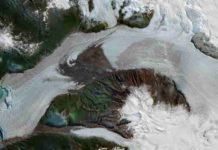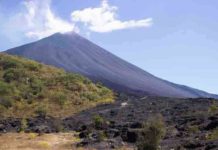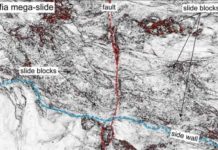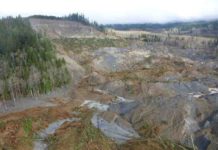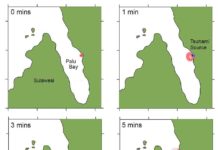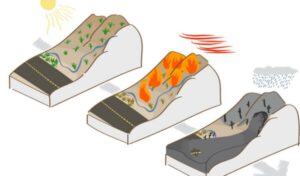
A wildfire followed by an intense rainstorm is often a recipe for disaster. Without vegetation to cushion rainfall, water runoff can turn into a fast-moving, highly destructive landslide, called a “debris flow,” which often has the power to wipe out cars, homes and highways—sometimes resulting in casualties.
Northwestern University researchers supported by the U.S. National Science Foundation have augmented a physics-based numerical model to investigate and predict areas susceptible to debris flows.
“Wildfires and their consequences, such as landslides, are exacerbated by the effects of climate change and are resulting in devastation in many regions of the nation,” said Bruce Hamilton, a program director in NSF’s Directorate for Engineering. “This research can help us anticipate and mitigate those impacts.”
This augmented model eventually could be used in an early warning system for people living in high-risk areas, enabling them to evacuate before it’s too late. Information from model simulations could also be used to design new infrastructure—such as diversion bars that deflect fast-moving water away from homes and roads—for high hazard zones.
The research is published in the journal Natural Hazards and Earth System Sciences.
“People want to know about their immediate and future risk,” said Northwestern’s Daniel Horton, the study’s senior author. “Although it’s not yet to operational standards, this modeling framework could one day be instrumental in forecasting where debris flows are likely to occur and deciding who needs to be evacuated.”
As climate change increases the likelihood of wildfires and heavy rains, debris flows also might become more common. Just last year, a debris flow tore out a 150-foot section of roadway along Highway 1 near Big Sur, California. The picturesque two-lane highway was closed for three months, cutting off tourism to the region.
The disaster resulted from a one-two punch: a wildfire that burned from August through December 2020, followed by an atmospheric river—a long, thin string of concentrated moisture in the sky—that dumped nearly a foot of rain the following January.
Following intense rainfall, areas with wildfire burn scars are more susceptible to flash flooding. In a typical situation, vegetation interacts with rain, which then soaks into the ground. But if an area is burned, vegetation is gone, so it can no longer intercept the sudden influx of moisture. Even worse, in some regions, waxes from burned vegetation melts, enters the soil and then solidifies. These waxes create a barrier for rain, blocking it from penetrating the soil. Instead, rain runs over the top of the soil, picking up rocks, mud, trees and even cars to become a debris flow.
“Because of human-caused climate change, the ingredients that lead to debris flows are certainly becoming more common,” Horton said.
Reference:
Chuxuan Li et al, Augmentation and Use of WRF-Hydro to Simulate Overland Flow- and Streamflow-Generated Debris Flow Hazards in Burn Scars (2021). DOI: 10.1002/essoar.10508144.2
Note: The above post is reprinted from materials provided by National Science Foundation.





